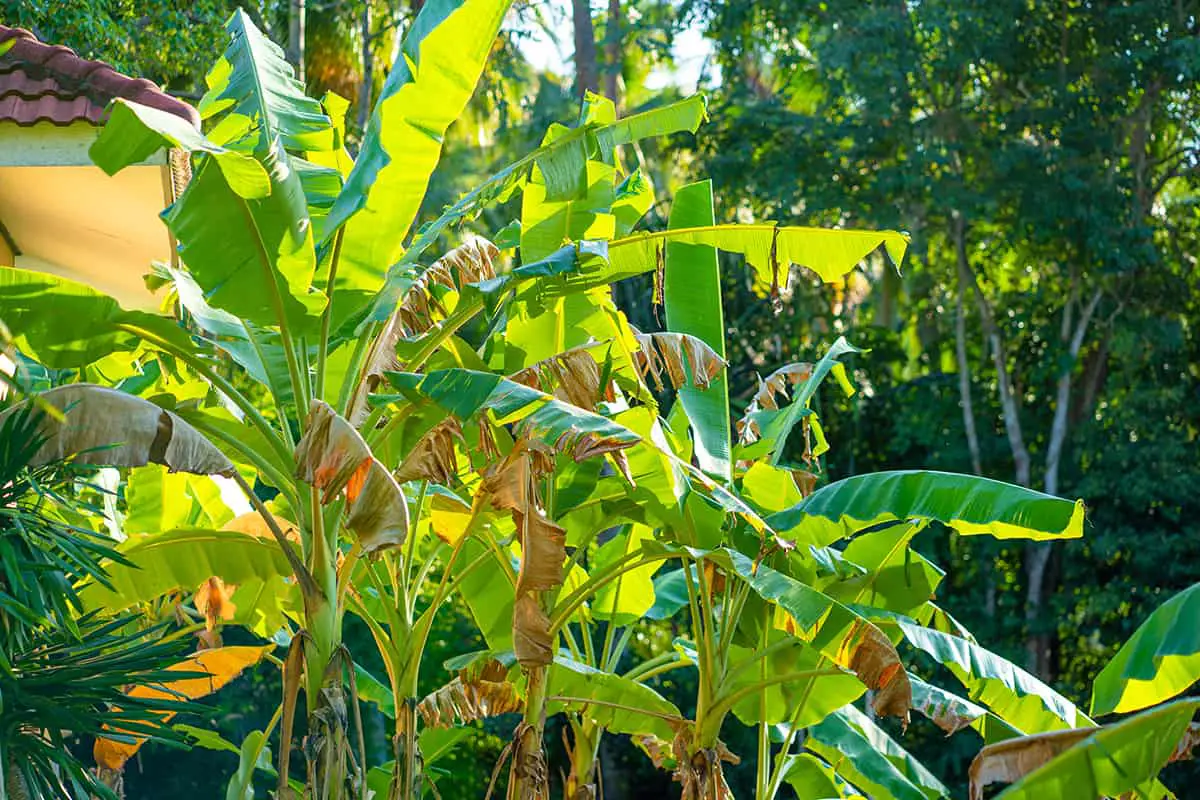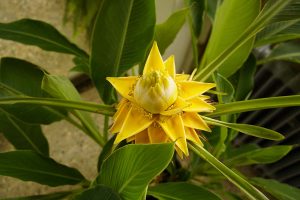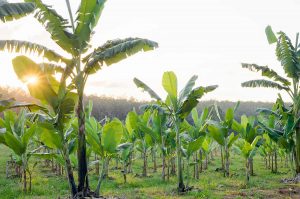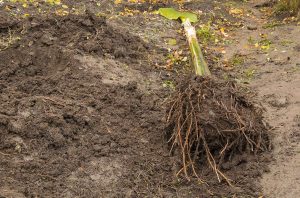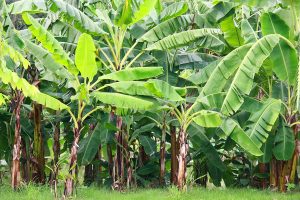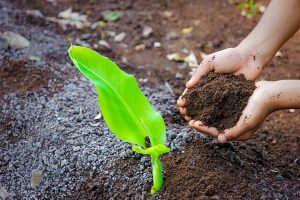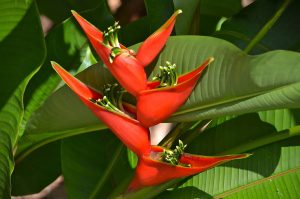Banana trees are an attractive addition to a garden for a tropical aesthetic, and they have also gained popularity as a large, decorative houseplant. In hot climates, the banana tree is also grown for its delicious fruits.
Caring for a banana tree is quite simple as long as you understand its needs. Here we investigate whether damaged leaves should be removed from the banana plant, and how to prune the tree for best growth.
If your banana tree is exhibiting some signs of damage on the leaves, for example, if they have turned brown, then you can remove them to improve the overall look of the plant.
As with most plants and trees, removing damaged leaves isn’t essential to the plant’s health, but it will greatly enhance the plant’s visual appeal.
Table of Contents
Should a Banana Tree be Pruned?
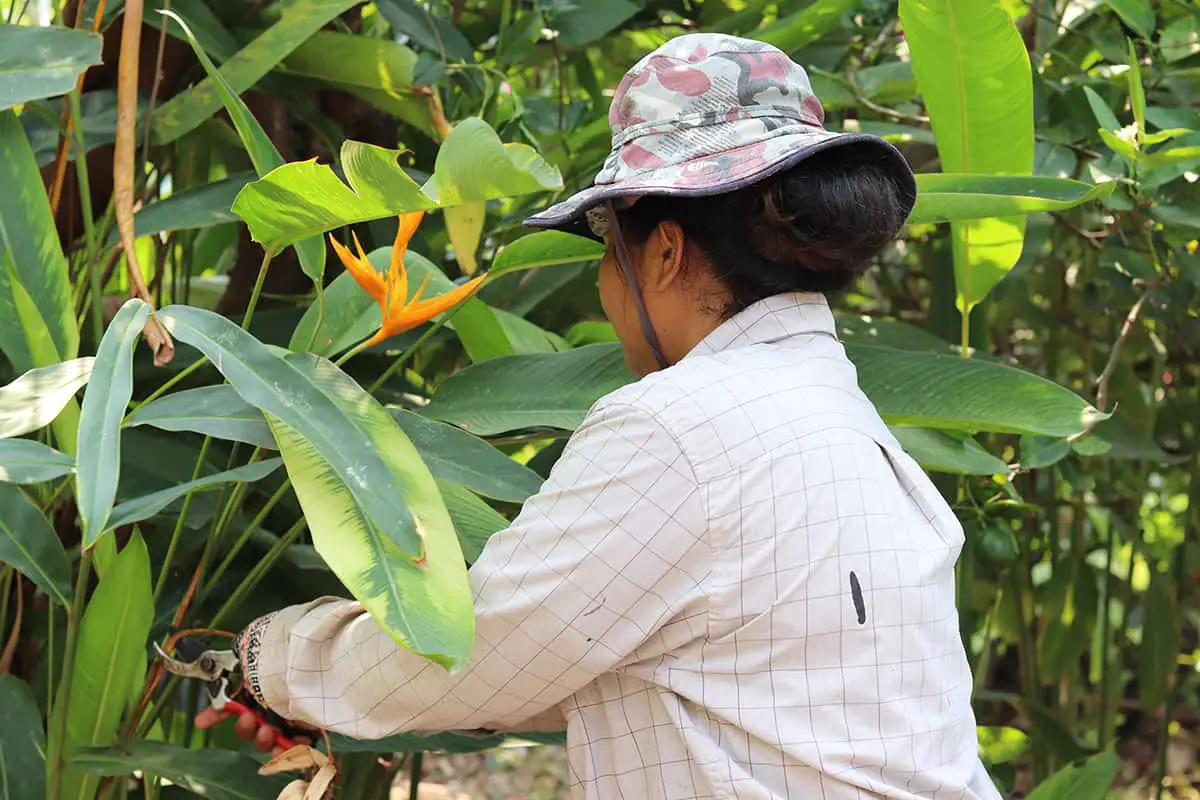
A banana tree is very low-maintenance when it comes to its pruning requirements, but there are a few scenarios where pruning some leaves from the plant is advisable.
Damaged leaves
If the leaves of the banana plant are damaged then it can affect the overall visual impact of the plant. Damaged leaves can look brown, droopy, and dried out, which makes the plant appear to be unhealthy.
By removing damaged leaves you can instantly give the banana plant a more fresh and healthy look. Pruning off damaged leaves can also help to stimulate the growth of new leaves, for a lusher banana tree.
Diseased leaves
Banana trees are not especially susceptible to disease, but they are also not immune. Fungal diseases can affect banana trees because these types of diseases thrive in moist and humid environments, which banana plants love.
If your banana plant develops a fungal disease then you should remove all of the affected leaves immediately, and treat any remaining leaves with a fungicide spray to save the rest of the tree. Pruning out the diseased leaves will help to stop the disease from spreading to healthy leaves, and it will also improve airflow circulation which can be useful in preventing fungal disease.
Infested leaves
Pest infestations can wreak havoc on the foliage of banana trees. They can cause significant damage when the infestation is spotted too late, such as brown spots on leaves, holes in leaves, and even skeletonized leaves. Pests that can affect banana plants include spider mites, scales, aphids, mealybugs, thrips, and vine weevils.
In the event of an infestation, you should remove damaged leaves and dispose of them carefully to avoid spreading the infestation to other plants.
The remaining healthy parts of the tree should be treated for pest infestation, and the specific course of action you take will be determined by the type of pest the banana plant has become the host to. In the case of a mild infestation, hosing the banana tree down with soapy water may be enough to resolve the issue, though in more extreme cases an insecticidal spray may be necessary.
Overwintering indoors
If your banana plant is grown outside during the spring and summer but needs to be moved indoors during fall and winter to protect it from frost in your climate, then pruning away some of the leaves might be necessary. Banana trees can grow to be very sizable, so if you need to move the plant indoors but have limited space, then you can prune back the leaves in order to fit them into your home.
This might seem quite brutal if the leaves are in good condition, but for many people, it will be the only way to physically get the plant into their home. Pruning back the leaves in the winter will not cause any long-lasting damage to the banana tree.
These plants grow so vigorously that by the time the weather is warm enough to put the banana tree back outside the following spring, the leaves will have shot back up again. In extreme cases, you can completely prune away all of the leaves on the banana plant to overwinter it inside the home, and it will still entirely regrow.
When is the Best Time to Prune Banana Leaves?
The best time to prune banana leaves depends on the reason you are pruning them, and whether the banana tree is grown for fruit or for ornamental value.
Fruit Bearing Banana Trees
Fruit-bearing banana trees should only have their leaves pruned after flowering or fruiting because otherwise, the removal of the foliage can have an adverse effect on the yield of fruit. When a damaged leaf dies back, the energy from the dying leaf will be returned back to the plant and used in the production of flowers and fruits.
If you cut off the damaged leaf before it has returned its energy, then you will be depriving the tree of that energy and potentially reducing the flowering capacity of the plant. By waiting until the plant has flowered, you can be sure that you aren’t causing any unintentional damage.
The exception to this is if the leaves are diseased or infested. In the case of disease or a pest infestation, you should remove the affected leaves immediately at any time of year in an attempt to preserve the life of the tree.
Ornamental Banana Trees
Ornamental banana trees can have their leaves pruned at any time because they aren’t being grown for their flowers and consequently their fruits. You can prune an ornamental banana tree at any point in the year if the leaves are damaged, or diseased, or even if you just want to restrict the size of the plant.
What Causes Damaged Leaves on Banana Plants?
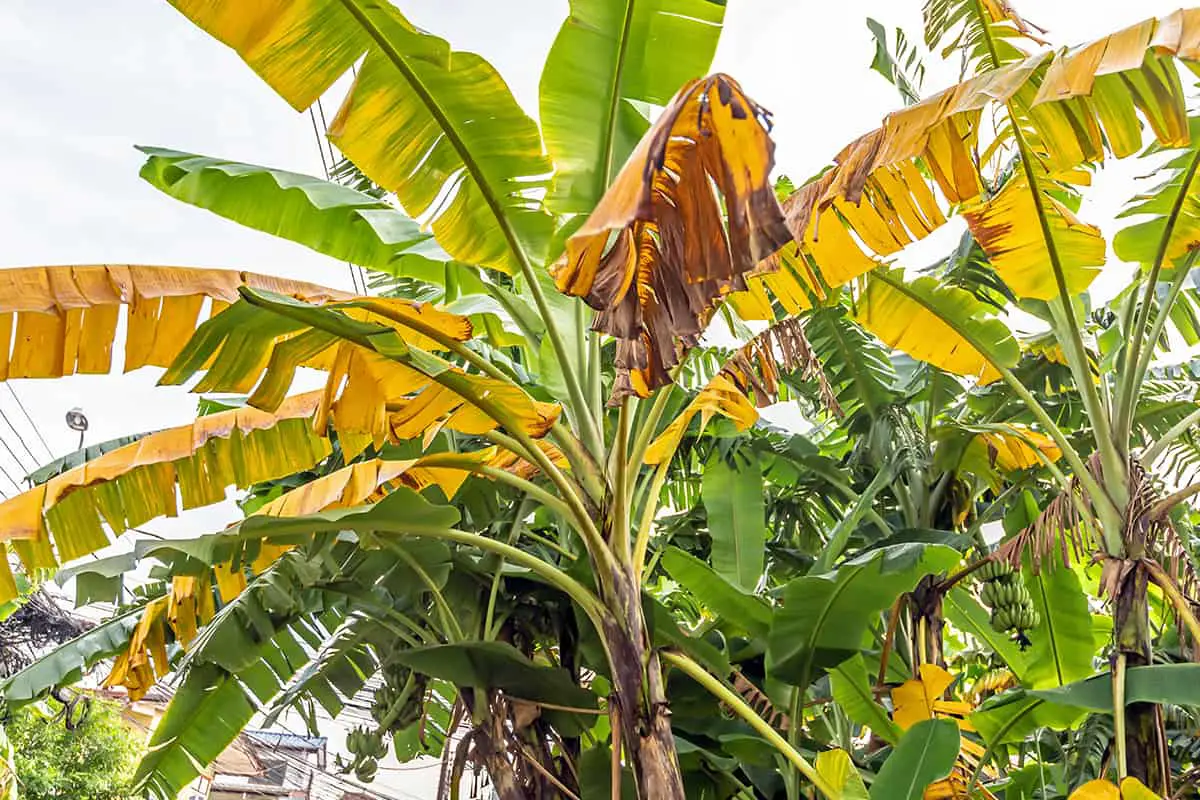
If your banana tree is experiencing some damaged foliage then you should try to figure out what is causing the damage, in order to avoid more healthy leaves turning brown or dying back.
Lack of water
If your banana plant isn’t getting enough moisture from the soil, then the leaves can begin to turn yellow or brown. The tips of the leaves will typically change color first, and become dry and crispy. Check the condition of the soil by dipping a finger in. If it feels dry several inches down then it probably isn’t getting enough water.
Too much water
Banana plants are thirsty but you can be overzealous if you’re not careful. Overwatering the plant can be just as harmful as underwatering it. This can rot the roots so they are unable to absorb moisture or nutrients from the soil, resulting in browning leaves, and the eventual death of the plant if conditions do not improve.
Low humidity
Banana trees hail from exotic jungle environments where humidity is high. This should be replicated when growing banana plants at home, and if it isn’t then the foliage can display significant damage. This can look like brown, dry spots on the leaves, or the lower leaves will turn entirely brown and fall off.
Nutrient deficiency
Banana trees are heavy feeders, with high nutritional needs. If these needs are not met, their foliage can develop signs of damage. Avoid this scenario by applying a generous quantity of fertilizer on a regular basis throughout the growing season.
